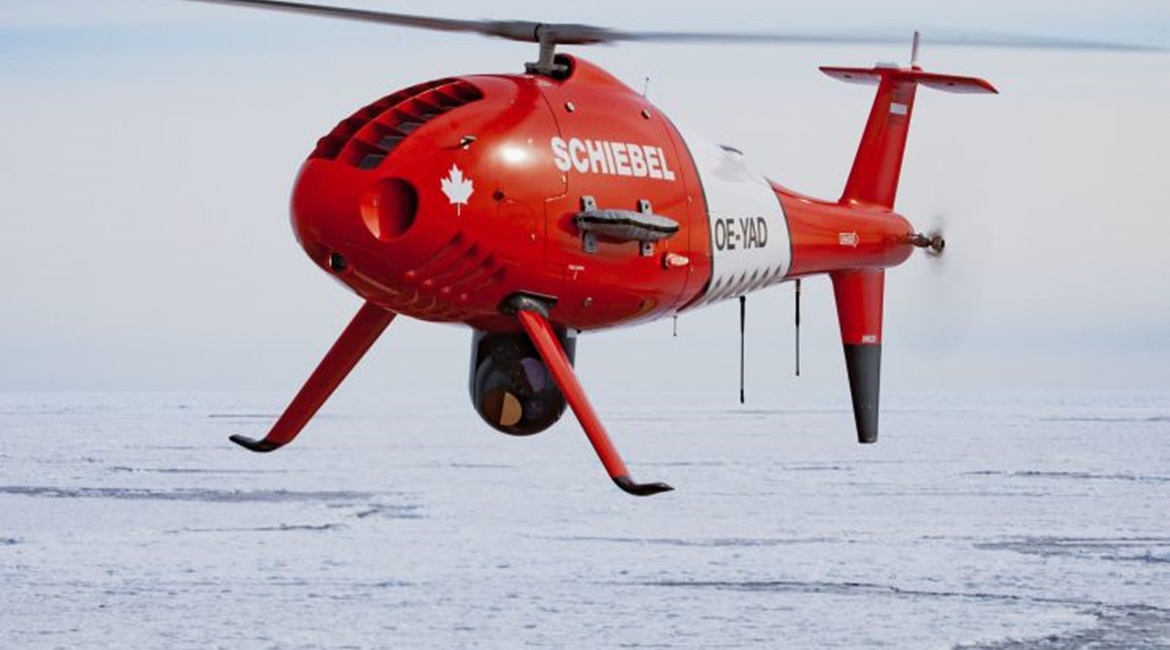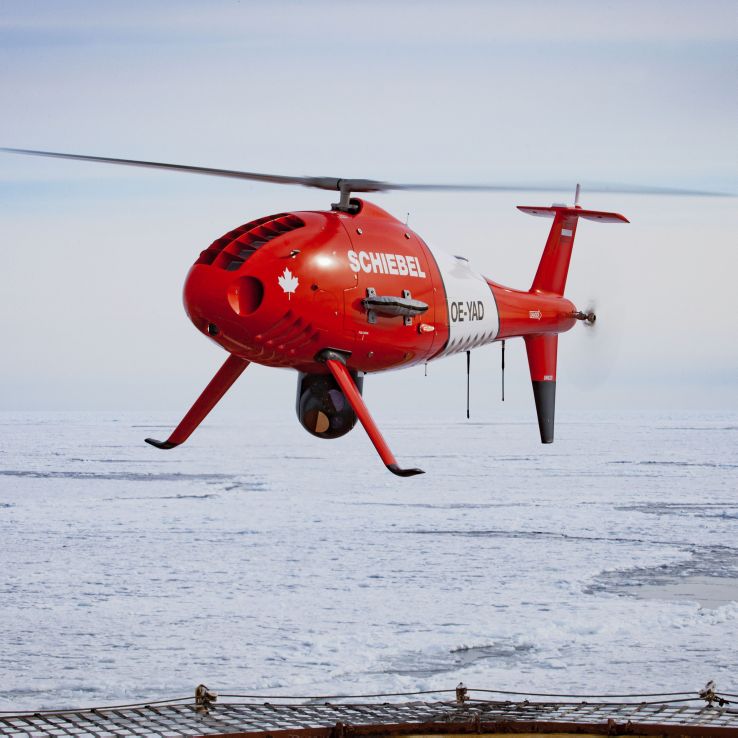
A compact aircraft design and fast spinning rotor are a few of the technical designs that enable Schiebel’s S-100 Camcopter unmanned rotorcraft to perform in icy conditions.
Icing is dangerous to both fixed-wing and rotor-propelled aircraft because it adds weight as it accumulates. This additional weight not only limits performance as it accrues by forcing the engine to work harder, but it can, in a worst-case scenario, cause an aircraft to crash.

The Schiebel S-100 Camcopter UAV has unique features, such as a compact design that heats components, which enables it to fly in icy conditions. (Schiebel)
Chris Day, Schiebel chief technology officer (CTO), told Jane’s on 5 June that the -4° to 4° Centigrade temperature range is where aircraft are most vulnerable to icing due to high levels of moisture in the air. Day said the S-100’s compact design, with barely a finger’s worth of space between any two components, allows for parts to heat each other.
The biggest contributors of heat in the S-100 are the engine, exhaust, and gearbox. The combination of these parts, Day said, also warms critical components that operate outside the aircraft in the cold temperatures.
The S-100 is a vertical take-off and landing (VTOL) aircraft that does not need a prepared area or supporting launch or recovery equipment. The aircraft navigates automatically via pre-programmed Global Positioning System (GPS) waypoints or can be operated directly with a pilot control unit. The aircraft has a range of out to 200 km, both on land and at sea, and has an endurance of up to six hours.
Looking to read the full article?
Gain unlimited access to Janes news and more...






